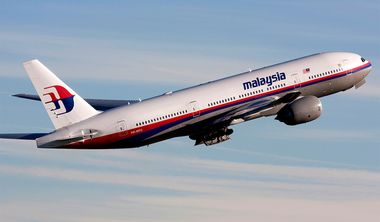A NEW search for missing MH370 will use robot submarines and underwater microphones to scour vast swathes of the Indian Ocean for wreckage.
Malaysian officials revealed today that a new £55million hunt is being launched for the missing jet 10 years after it vanished.
The Malaysian Airlines flight disappeared from flight radar screens on March 8 2014 as it flew from Kuala Lumpur to Beijing with 239 people onboard.
It sparked the biggest search in aviation history and still the fate of the jet, thought to have crashed in the Southern Indian Ocean, remains a mystery.
Countless theories have been touted in the years since it vanished, including a depressurised cabin sparking a ghost flight into oblivion and a suicidal pilot deliberately ditching the plane.
Now exploration company Ocean Infinity – whose proposal was accepted by government officials – is set to reignite hope in the hunt for the vanished jet.
Underwater robotics company Ocean Infinity previously revealed to The Sun that it had submitted the new search proposal in June this year.
It told how three of its robot submarine vessels were on standby waiting for the green light from officials.
The search, they said, would resume in a 15,000sqkm area off the coast of Western Australia, near the last known location of the doomed jet.
And WSPR technology looks set to play a big part, with Professor Simon Maskell acting as an adviser to the Ocean Infinity team.
Professor Maskell’s team at Liverpool University have researched the use of WSPR tech to detect and track aircraft.
Searchers could even use hydrophone data – sound picked up by underwater microphones.
Ocean Infinity will receive a whopping £55million from the Malaysian government – if it finds new wreckage of the jet.
Transport minister Anthony Loke said in a statement that the government has a “responsibility and obligation” to those who lost loved ones when the plane vanished in March 2014.
“Our responsibility and obligation and commitment is to the next of kin. We hope this time will be positive, that the wreckage will be found and give closure to the families,” he said.
Loke added: “The Cabinet has agreed in principle to accept Ocean Infinity’s proposal to resume the search for MH370’s wreckage in a new search area estimated at 15,000km (9,320 miles) per square based on the no-find-no-fee principle.
“This means the government will not have to pay unless the wreckage is found.”
The same organisation first searched for the doomed jet in January 2018 with its Seabed Constructor robot but was unsuccessful.
The underwater machine instead discovered the wreck of the Argentine San Juan submarine after it vanished in 2017 killing all onboard.
Ocean Infinity has been involved in several high-profile projects such as the search for Ernest Shackleton’s ship and the hunt for the Stellar Daisy the largest ship ever to be lost at sea.
Malaysian officials have not confirmed the exact site for the new search.
The official MH370 narrative suggests the plane made a bizarre U-turn, flying across Malaysia, turning northwest at Penang Island and across the Andaman Sea.
Data from military radar and satellite data revealed that the plane flew on for hours towards the Southern Indian Ocean where it crashed in an unknown location.
Families of those who were lost when the plane vanished have repeatedly called for fresh searches over the years.
Several searches and a series of blunders mean the missing jet has never been found but loved ones and experts pushing for a new investigation have been given a glimmer of hope.
Aviation journalist Jeff Wise previously told The Sun: “There’s a general sense among the public that, having searched the seabed and failed to find the plane, the authorities should just keep searching further.
“But where? The seabed search was based on the analysis of signals sent by the plane to an Inmarsat satellite.
“This analysis was used to generate a probability heat map, with a high probability in the middle, and progressively lower probability as you move outward.
“The further out you go, the less and less likely you are to find that plane in any particular square mile.”
“It implies that someone has come up with either new information or a new analysis to focus on a particular area.
“If they do launch the search, and it fails again, it will be high time for search officials to start grappling with this history of failure by asking hard questions about the assumptions they’ve made — most particularly, why they were so quick to assume that it couldn’t possibly have been a cyberattack when multiple cybersecurity experts say it very well might have been.”












